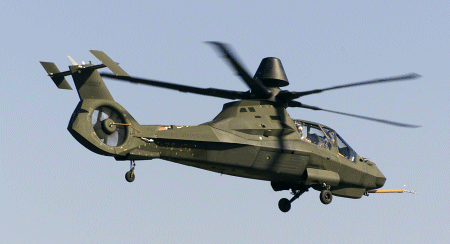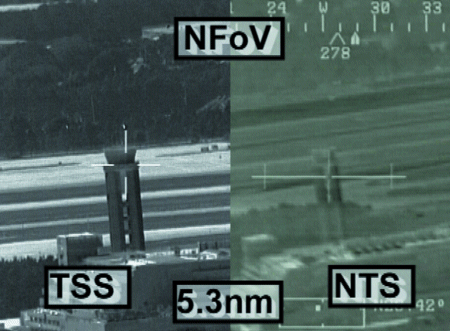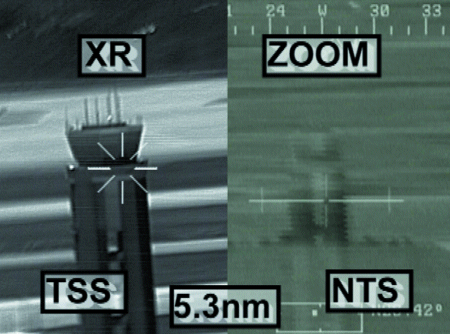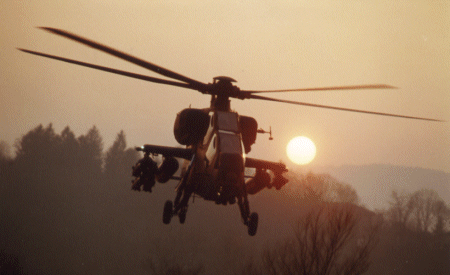Combat helicopters have been a feature of the battlefield for almost 35 years, dating to the Bell AH-1's Vietnam war debut. From a comparatively simple gun and rocket-armed fire support platform, the armed helicopter evolved in the 1970s and '80s into anti-tank killers designed to halt Soviet Red Army armour in its tracks. Today's demand is for more robust helicopters capable of deploying to and operating in less clearly defined areas, able to respond to different threats and to be fully interoperable with other systems and air arms.
Older helicopters face the considerable challenge of modernising in the face of a rapidly changing doctrinal landscape and breakneck advances in computing technology. Today's combat machines, however, are mature and tested weapon systems that have benefited from the operational lessons of the Gulf War and interventions in Somalia and the Balkans.
The steady slide in defence spending since the fall of the Berlin Wall has left military planners wrestling to balance the conflicting needs of funding new programmes while trying to keep increasingly aged systems operationally relevant. The Boeing Sikorsky RAH-66 Comanche, for example, was conceived in the early 1980s as the LHX, yet it is not due to achieve initial operational capability until December 2006 and the last of 1,213 planned machines will roll off the line in 2026.

Despite its protracted gestation, the Comanche is unquestionably the benchmark against which current and future combat helicopters will be measured. This is underscored by the way the RAH-66 is being positioned as the centrepiece of the US Army's Aviation Modernisation Plan and in the vanguard of its lighter and more lethal Objective Force planned for 2008 and beyond.
The compact 4.3t machine encompasses the latest beyond-line-of-sight broadband communications, onboard and remote sensor, command, control, communications, computers and intelligence data fusion, fly-by-wire (FBW) flight controls, fibre-optic databases, a third-generation binocular helmet-mounted display (HMD), integral self-test diagnostics, ballistic tolerant composite structure and five-blade bearingless rotor. The targeted fly-away unit cost of the helicopter is $14.7 million, excluding its LHTEC T800-801 turboshafts.
Low observability
Arguably the helicopter's biggest discriminators are its low-observable (LO) design, network centric integration and low support costs. "Simply put, Comanche is the most survivable air vehicle for the army," claims Jean Chamberlain, Boeing RAH-66 programme manager. "Its low observable quality allows it to get in and out of a mission where no other vehicle can. Signature is not just acoustic and infrared, which other helicopters can address, but it is also [about] meeting the RCS [radar cross section] requirement in static and dynamic testing."
As part of the ongoing engineering and manufacturing development effort, a fully articulated Comanche pole model is undergoing RCS testing. The helicopter is claimed to have an RCS smaller than a Lockheed Martin AGM-114 Hellfire anti-tank missile, up to six of which can be accommodated in the helicopter's two internal weapons bays. The helicopter's infrared (IR) signature is one-quarter of that of a Boeing AH-64 Apache and is almost twice as quiet as the Bell OH-58D Kiowa Warrior Scout it replaces.
LO features include a graphite, Kevlar and glass reinforced plastic airframe, a shrouded low-noise eight-blade tail rotor, retractable landing gear and stowable 20mm cannon. Comanche will be equipped with a version of the Northrop Grumman/Lockheed Martin Longbow fire control radar (FCR) as fitted to the AH-64DApache Longbow, but upgraded with an electronically scanned antenna and repackaged into mast-mounted cone considerably smaller in size and signature than the Apache's doughnut-shaped housing.
The RAH-66 has been designed from the outset to be fully integrated with other assets operating in the battlespace such as ground forces, unmanned air vehicles or other manned aircraft. Target data from the FCR can be fused with forward looking infrared (FLIR) imagery, automatically classified and prioritised using Northrop Grumman's Aided Target Detection/Classification system and transmitted with position data to other assets.
Designers plan to minimise Comanche operating and support (O&S) costs by incorporating prognostic health management systems and adopting a two-level maintenance plan. A goal of 2.6 maintenance hours per flight hour has been set, compared with 8.8h for the Apache, while support equipment has been trimmed to 52 items, one-sixth that of the AH-1. "That's something you just can't go back and do to a legacy aircraft," says Thomas Rains, Boeing Sikorsky RAH-66 director business development.
Plans call for the Comanche to initially replace the OH-58D, which lacks the range, weaponry and stand-off sensors to survive on a modern battlefield. With the addition of external weapon pylons, the RAH-66 is capable of carrying up to 16 Hellfire missiles and performing theAH-64D's heavy attack role. The Apache is earmarked to remain in service until 2030, but the future shape and size of army aviation is being reassessed as part of a wider review of the US military.
One variable that could affect this is a proposed increase in full rate production of the RAH-66 from a planned 62 machines a year to 96 by 2009, which would accelerate delivery of the final Comanche by seven years and save $3 billion (Flight International, 10-16 April). The US Army is in the process of receiving an initial 232 AH-64As remanufactured to Apache Longbow standard and recently placed a second multi-year contract for another 269 rebuilds. If the helicopter is to remain in service for another 30 years, the army adds, further improvements will be needed.
"That can all change as part of the options we're now going through," says Col Howard Bramblett, US Army Apache programme manager. "Right now we're trying to figure out whether or not we're going to replace Apache with Comanche and, if we are going to do that, how soon and what return are we going to get on our investment before pouring money into it. You wouldn't want to rebuild your car on the way to the junk yard."
If Comanche is the army's lead Objective Force helicopter, Apache is the transition vehicle to the leaner military envisaged by Chief of Staff Gen Eric Shinseki. In addition to the Longbow FCR, the helicopter is getting new colour displays, communications, navigation, data management, datalink and weapon processors. Also in the post-Kosovo procurement pipeline is a second-generation Lockheed Martin Arrowhead targeting FLIR, Suite of Integrated Infrared Counter measures (SIIRCM) and ITT's ALQ-211 Suite of Integrated Radio Frequency Countermeasures (SIRFC) due to be fielded by 2006.
Improvements
Boeing has mapped out a series of further enhancements loosely designated asAH-64X. "The basic platform has not changed significantly since the original design of the 1970s and fielding in the early 1980s. The airframe, rotor and drive system are all approaching 20 years old and are beginning to become the high-cost drivers on the platform," says Larry Plaster, Boeing Apache modernisation programme manager.
New systems have steadily pushed up the Apache's primary operating weight from the original design target of 6,630kg (14,600lb) to over 8,170kg. As a result the helicopter is close to falling short of the operational requirement for a 2.3m/s (455ft/min) vertical rate of climb and is already below the 145kt visual metrological conditions speed. To restore the AH-64's performance requires either uprating the General Electric T700-701C engine beyond its 1,445kW (1,940shp) rating, or making the jump to the 2,235kW-class Common Engine Programme (CEP) planned for the Sikorsky UH-60X.
Any power growth will require replacement of the drive system. One possibility being explored under a joint industry/government funded science and technology programme is using a split-face gear to drive the transmission from both sides of the input pinion. The net effect is to double the contact surface area without any significant growth in gearbox size, which avoids expensive airframe modifications. The challenge is achieving the level of gear precision to ensure an equal torque distribution. A scaled 149kW(200hp) gearbox has been tested and Boeing is seeking funds for full-size proof of concept demonstration.
Work has also been under way since 1996 on a lighter, composite five-blade main rotor, a prototype of which is due to be windtunnel tested early next year. The addition of a fifth blade is intended to provide a margin for future weight growth, while reducing blade-loading and, in the process, halving O&S costs. The alternative is to increase the blade chord, which would increase vibration, or to extend the rotor diameter by 460mm (1.5ft), which would require a lengthened tail boom.
Tail-rotor torque will also have to be uprated, which in turn drives a need for a stronger boom and aft fuselage attachment. Boeing is looking at a composite structure using pre-stitched material and vacuum assisted transfer molding to produce a stronger but lighter structure. Compared to the metallic boom and empennage, the new structure costs 25% less to manufacture, is 15% lighter and capable of sustaining 25% higher loads. The process is being validated on a centre fuselage section, which will be statically tested next year.
RPA enhancements
Further improvements are planned for the AH-64D's avionics, including the adoption of an open system architecture allowing replacement of outdated processors and a cut in avionics boxes and wiring. This would also open the door to elements of the Rotorcraft Pilot Associate (RPA) - first demonstrated on the AH-64 - being retrofitted, such as a digital map and messaging. "We're working on subsets of RPA to support cognitive decision aids to the crews," says Plaster, who adds that the full system requires FBW architecture like the Comanche.
While the US Army has chosen to accelerate the disposal of its AH-1S Cobras, the US Marine Corps has embarked on a major remanufacturing effort to extend the lives of its 180 AH-1W SuperCobras by 15 to 20 years. The marines contend that for less than $11 million each, the modernised AH-1Z is financially more attractive than acquiring a new machine. An additional pay-off is the upgrade and re-engining of 100 UH-1N utility machines, with 85% commonality to the attack helicopter in terms of major components.
The AH-1Z will receive a re-lifed 10,000h airframe, a composite four-blade bearingless main rotor, four-blade tailrotor, wing pylon with 13litre (50 USgal) integral fuel cell and uprated 1,955kWtransmission, better matched to the machine's twin T700-401 turboshafts. The machine will have triple the range or double the payload of the AH-1W. "The key lesson from Kosovo was the need for greater speed, range, precision targeting and positive target identification," says Capt Tom Curtis, USMC H-1 programme manager.


The most significant AH-1Z enhancement is the Lockheed Martin AAQ-30 Hawkeye target sight system (TSS). It comprises a colour TV, laser rangefinder/designator, laser spot tracker and a mid-wave FLIR, which the USMC claims offers twice the detection, recognition and identification range of second generation systems. The TSS has four fields of view and extended range (XR) mode, which with image processing provides another 60% range increase. The TSS more than adequately meets the Hellfire II's 9km range and keeps the AH-1Z beyond the reach of most man portable surface-to-air missiles.
AH-1Z and UH-1Y will share a Litton integrated glass cockpit with moving map, digital communications including ARC-210 and satcom, and two open system architecture weapon/mission computers. The other critical element in the upgrade is an Integrated Helmet Display and Sighting System (IHDSS) from BAE Systems.
Integration
The system, unlike Apache's HMD, is binocular, using dual cathode ray tubes and image intensifiers to project day/night symbology and overlaid targeting data onto the visor. "The system weighs the same as the existing helmet and night vision goggles, but has better centre of gravity and is less fatiguing," says Curtis.
The USMC is looking at further enhancements, including integrating FLIR and TV imagery with the IHDSS, and the Link 16 tactical datalink. The AH-1Z also needs an improved integrated defensive aids suite, smaller than SIRFC/SIIRCM. The SuperCobra is the only US attack helicopter with an air-to-air missile (AAM) capability, with the Raytheon AIM-9M, which in time will be upgraded to the AIM-9X.
Often overlooked in the heavyweight battle between Apache and the Eurocopter Tiger is Italy's AgustaWestland A129 Mangusta, which still claims the title of being the only operational European-built combat helicopter. The 4.1t machine is smaller than much of the competition other than the Comanche, which has been designed along similar light attack and scout lines.

Italy plans to modernise the Mangusta into the multi-role A129 CBT. It will uprate its 45 helicopters and starts taking delivery of 15 new build machines this year. The principal changes include adding a five-blade elastomeric main rotor, uprated 1,270kW transmission, installing the Cobra's chin-mounted M197 20mm cannon, a 300-round magazine, improved communications and a strapdown GPS satellite navigation system. Italy's CBT will also carry the Raytheon Stinger AAM, putting it several years ahead of either the Apache or the Comanche.
CBT forms the basis for the more ambitious A129 International, now competing for orders in Australia, Spain, Sweden and Latin America. The 5.1t features new 950kW LHTEC CTS800-2s or 15% more powerful -15 turboshafts in place of the Rolls-Royce Gem, and a new gearbox. Agusta is also proposing to replace the Saab HeliTOW sight with a choice of either the TSS or the Taman H-MOSP system, enabling the helicopter to carry eight Hellfire or Rafael NT-D anti-tank missiles. "Our philosophy from the start has been to use only proven systems used by other nations," says Alessandro Faccenda, Agusta A129 engineering sales.
Upgrades
The A129's single monochrome glass display will be upgraded to two 150mm x 200mm (6in x 8in) colour displays with digital moving map, inertial/GPS navigation, and fixed data loader all integrated through a 1553B databus. In place of the Italian army's current IDHASS Apache helmet, Agusta plans to offer a binocular HMD based on Thales' Tiger system, to which the FLIR and turret will be slaved. The A129 International for now retains the BAE ALQ-144 IR jammer. Agusta is also looking at adding a datalink, such as Link 16.
Russia's attack helicopter programmes have been hit by moribund national finances. Kamov has been more proactive, offering its Ka-50/50-2/52 family in a number of competitions while Mil has concentrated on upgrades for national and international Mi-24/25/35 Hind users. Mil's attack helicopter development programme, the Mi-28N Havoc, has been slowed to almost a standstill, although the company predicts it will fly a second prototype early next year.
The twin-seat Ka-50-2 has essentially the same fuselage as the original single-seat Ka-50, but it is equipped with a more sophisticated Israel Aircraft Industries supplied weapons system, that allows the machine to be armed with Israeli weapons as well as the Russian supersonic, laser-guided KBM Vikhr (AT-16/9M120M) missile.
The twin-seat design was originally side-by-side but has been reconfigured as a tandem layout. Unlike in Western attack helicopters, the pilot occupies the front seat with the gunner in the rear, so it has become necessary to substitute the sight's direct optics with electronic imaging.
Kamov, however, says the link with IAI is not exclusive and that it will work with other avionics integrators. For South Korea, Kamov will work with another integrator, probably Russia's RPKB. In recent years, he adds, Russian manufacturers have developed new-generation avionics, including multifunction displays, data management and night vision systems.
NIIR-Phazotron has developed the Arbalet all-weather multimode radar for the Ka-52 and Mi-28N. It has a 360° mast-mounted antenna and a second on the nose. A radar-guided version of the Vikhr is being developed for use with the Arbalet.
The Russian army specification Ka-52 Alligator also carries electro-optic and low-light TV sensors. As well as the Vikhr, the Ka-52 can also employ Zvezda-StrelyaKh-25 (AS-9/10Karen) and Kh-29 (AS-14 Kedge) air-to-surface missiles and the KBM Igla (SA-16 Gimlet/SA-18 Grouse) air-to-air weapon. The Ka-52 has completed Kamov flight tests and should complete military trials by the end of this year. While pre-production machines are being built, the single prototype - which made its first flight in 1997 - has operated in Chechnya alongside Ka-50s, which appears to have convinced the Russian defence ministry to resume Ka-52 funding.
Kamov believes the lower operational and acquisition costs of the single-seater will pave the way for the night-attack Ka-50N. Intended as a second stage Ka-50 development, several Ka-50N experimental machines with different avionics have been used to test a number of FLIRs and weapons management systems from foreign and local suppliers.
Although the Russian army selected the Ka-50 over the Mi-28N, Mil is hopeful of foreign sales of the night attack helicopter although the design bureau's financial difficulties mean it is difficult to fund development work.
Mil has invested significant effort in upgrading the Mi-8/17 Hip and theMi-24/25/35. In March 1999, Mil flew the Mi-24VM, an upgrade of the Mi-24VP that can be armed with 16 KBM Shturm (AT-9Spiral) anti-tank weapons or its Ataka(AT-12 Swinger) supersonic anti-tank missiles, which can also be employed against airborne targets. The electro-optics system is the FLIR, TV and laser-range finder developed for the Mi-28N. Mil is aiming to upgrade 300 Hinds operated by non-CIS helicopters at a cost of around $1-1.5 million each. Other Hind modifications can include fitting the Mi-28's composite rotor blades, mast and tail rotor as well as more recent variants of the Klimov TV3 engine; and fitting the twin-barrel 23mm GSh-23 gun in-place of the12.7mm YakB-12.7 four-barrel cannon. A non-retractractable undercarriage reduces weight by 300kg and improves performance.
In March this year the Russian defence ministry displayed the Mi-24VK-1, upgraded by Mil and Aerospace Equipment along with the Kursk and Ryazan instrument plants. The modification includes new colour 130m x 130mm multifunction displays, one in the forward cockpit and two in the back. Also fitted is a new central processor and new TV, thermal imager and laser designator, mounted in a Urals Optics Mechanical Plant gyro-stabilised turret.
Eurocopter flew the first production Tiger and completed development of the HAP escort/support version at the end of last year. Anti-tank Tigers are due to enter service this year in Germany (UHT) and in France (HAC)in 2003.The UHT and HAC are equipped with the Euromep Osiris mast-mounted sight and are not fitted with a gun. The HAP has the roof-mounted Stryx sight and a GIAT30mm gun. HAPs will be produced in France at Marignane while the anti-tank machines will be assembled in Donauworth, Germany.
Despite not having delivered a Tiger, Eurocopter is considering its options for export machines. Eurocopter's bid into the Australian Air 87 campaign is based on the HAP version. As part of its bid, Manuel Torres, Eurocopter Tiger managing director, says the MTR390's rating can be boosted 7% - from 1,160kW (865hp) - by improving the full authority digital engine control software. A second step could increase the power by 17% over today's engine, but, says Torres, that would require major engine modifications.
The Australia Tiger proposal is 95-98% common with the French army's HAP version, but the roof-mounted sight (RMS) will be modified. The laser rangefinder will be replaced by a laser designator for the Lockheed Martin AGM-114 Hellfire missile as the helicopter's main armament. Torres says he has ordered an upgraded RMS from supplier Sogerma because an analysis indicated that the market would require Tiger to be offered with Hellfire instead of European weapons.
Source: Flight International























